Many red edible berries grow in the wild and as ornamental plants in gardens and public areas. Not all red berries are edible. So, you should be careful to correctly identify the plant before eating the fruits or touching them.
Some redberry plants can be toxic through skin contact. Even if they aren’t, there’s always the possibility of ingesting the toxins. This can be done by touching your mouth or eating something else without washing your hands.
I will discuss identifying poisonous red berries. I will also list some of the most common edible and non-edible ones.
- Related article: Plants in the Wild You Can Eat
7 Key Takeaways on Red Edible and Non-Edible Berries
- Identifying poisonous red berries requires using cues. These include leaf shape, bark texture, and plant size. Avoid eating them if uncertain. And be mindful of toxic seeds.
- The nutritional benefits of edible red berries include many being nutrient-rich and containing antioxidants and vitamins. This makes it beneficial to consume fresh.
- Hawthorn berries are edible fruits that vary in taste and can be used in jams or teas, but seeds contain cyanide.
- Mountain ash berries are edible but best cooked, making them ideal for jams and sauces.
- Red raspberries are sweet and tart. They are also rich in vitamin C and fiber. They are commonly used fresh or in various recipes.
- Wild strawberries are smaller but more flavorful than cultivated ones. They are high in vitamin C and suitable for eating raw or in various dishes.
- Non-edible red berries include Winterberry and American Holly. If eaten, they can cause nausea, low blood pressure, and other serious symptoms.
How to Identify Poisonous Red Berries
To correctly identify the plant, it’s not enough to look at the berries. It is sometimes easy to mistake them for something they aren’t. It’s best to rely on multiple cues, such as leaf shape, bark color and texture, and size and type of plant. If in doubt, simply avoid eating.
You should also be mindful of the seeds since many edible berries are toxic and should not be ingested. The seeds’ cyanide is only released if they are chewed, but it’s always best to be careful.
Children are especially drawn to the brightly colored berries. So, they should be taught prudence when harvesting or playing outdoors. Also, remember that in many cases, other parts of the plant might be poisonous in addition to the fruits.
On a lighter note, many red berries are edible but tasty and rich in important nutrients. Almost all of them are packed with antioxidants and vitamins. Eating them fresh whenever possible is best. It is to take advantage of their full nutritional value.
Another plus is that many species are easy to recognize. With some study and practice, you can safely pick them in the wild, even with children.
What Are 10 Red Edible Berries That Are Safe to Eat?
Below are some of the most common red berries in North America. There are also some less well-known ones.
Most can also be grown in your garden, sometimes very easily. You can choose to plant some of the edible fruit varieties. These delicious berry plants can add a splash of color to the greenery. But it’s even better when you have a healthy and tasty snack ready.
1. Hawthorn Berries (Crataegus species)
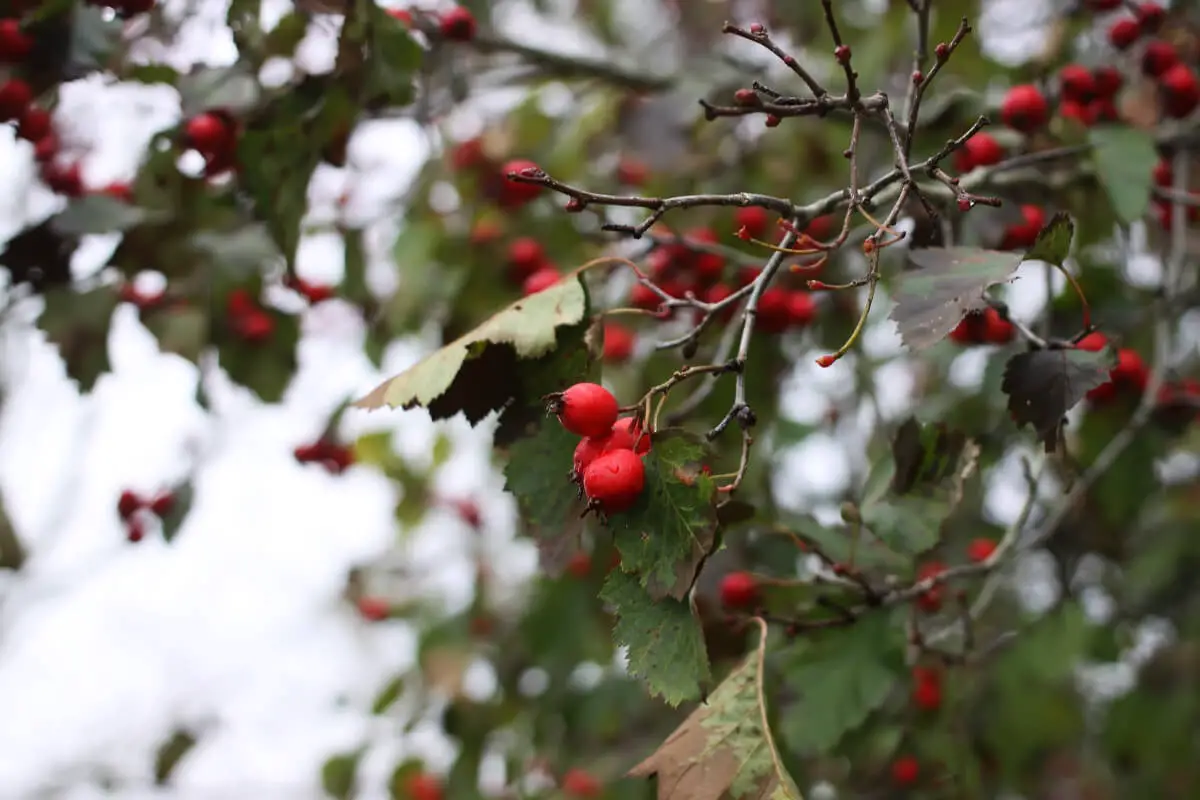
North America has at least 26 species of hawthorn, which are difficult to distinguish. All of them produce edible berry-like fruits, similar to apples but smaller.
Botanically, these fruits are pomes. They are deep burgundy and grow in clusters. Hawthorns are small trees with long spines. This can make harvesting the fruits difficult.
The taste of hawthorn berries varies greatly. You’ll have to try one from each tree before picking them, as some are too bitter. The sweeter ones can be eaten raw, while the rest can be used to make jams or juices. These berries can also be dried or used for tea blends.
Like most members of the apple family, the seeds of hawthorn berries contain cyanide. This is toxic to humans. However, the pulp is safe and an excellent source of vitamins B and C, pectin, and antioxidant effects.
2. Mountain Ash (Sorbus americana)
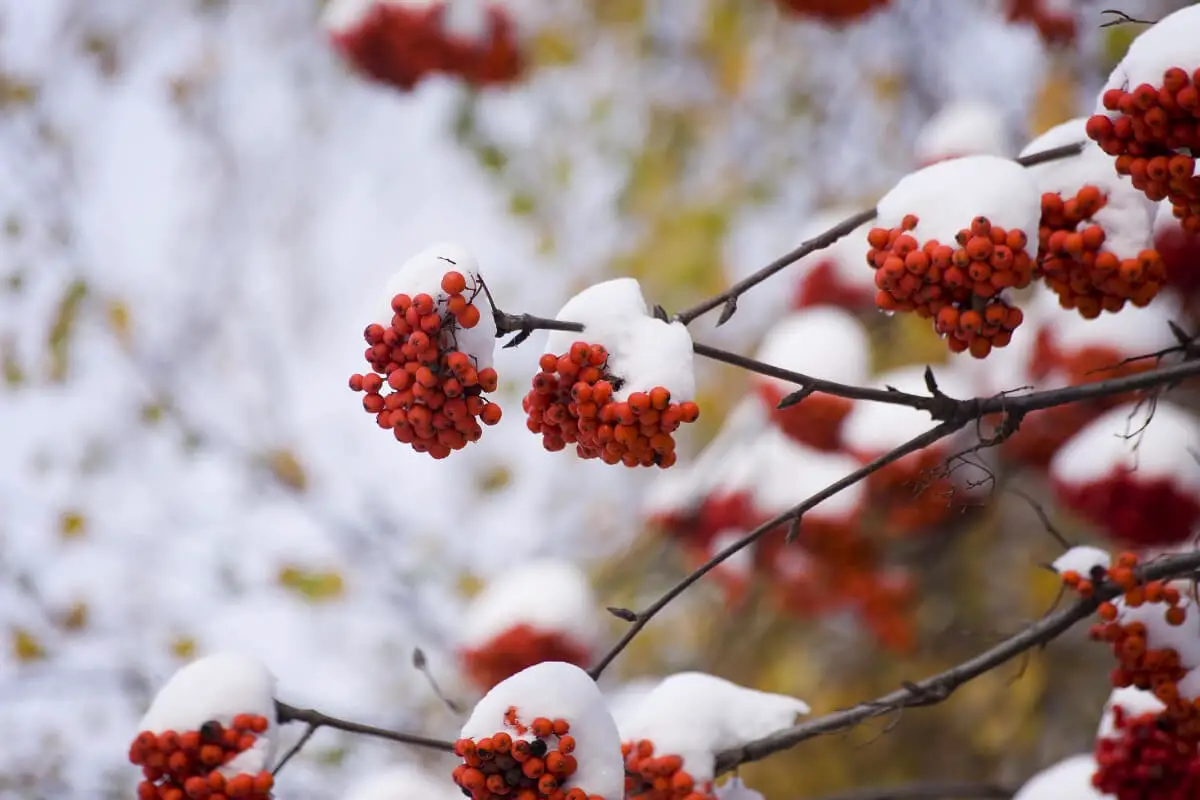
Mountain ash is a small, deciduous tree or shrub. It thrives on higher altitudes, especially on rocky slopes. It’s common in the northeastern states and Canada. These plants need a lot of sun and rich soils.
The fruits of the mountain ash tree are bright orange-red, and they ripen in the fall. It’s best to wait until late winter before picking them because the taste improves after they freeze. They are edible raw, but it’s best to cook them.
Be aware that mountain ash seeds are toxic, so be careful to discard them. These berries are great for jams and sauces. They also make wonderful fillings for homemade pies.
3. Barberries (Berberis species)
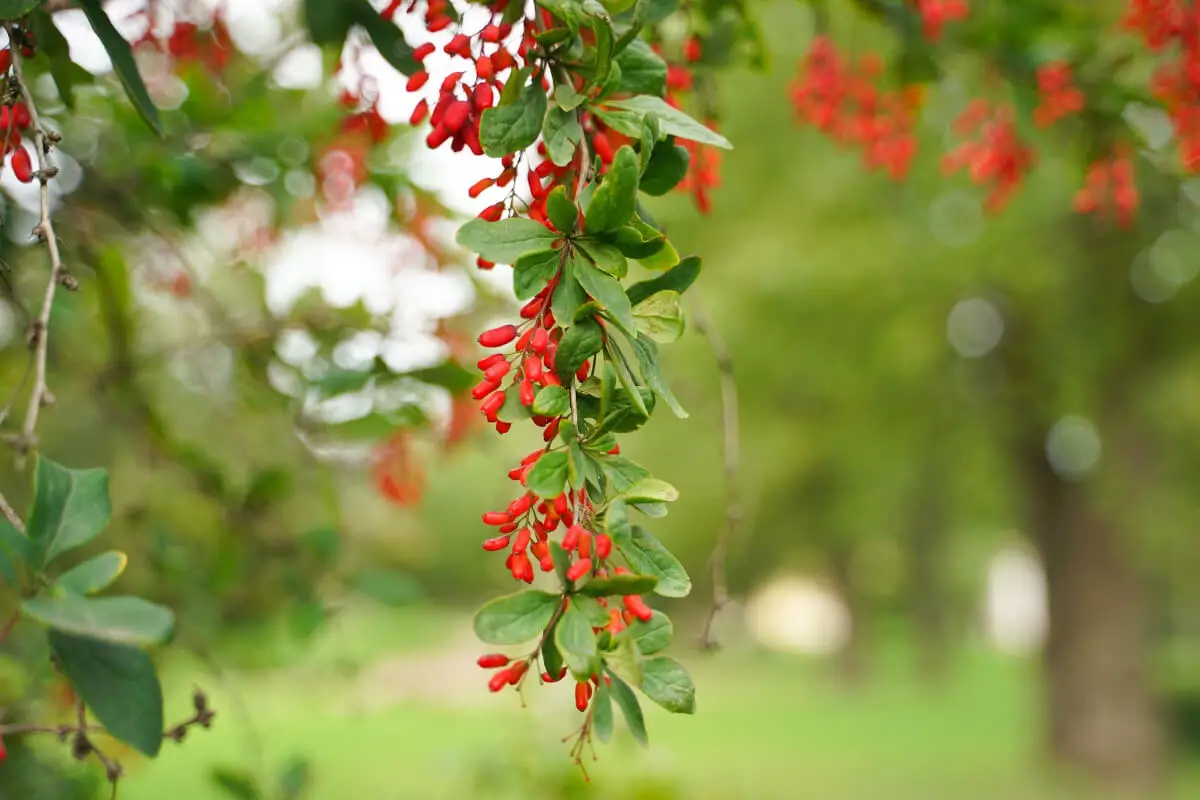
Barberries are deciduous shrubs native to Europe. They are now widespread in North America, mostly in the eastern part. Several species have red or black berries. The most common is the American barberry (Berberis canadensis). Barberries mostly grow in woodlands and old fields.
These barberry fruits are refreshing when eaten raw, as they taste sharp and tart. They are perfect for making jams and jellies and can also be used for teas. The seeds should not be eaten.
Barberries are rich in vitamin C and contain berberine. It boosts the immune system and is great for fighting winter colds.
4. Red Raspberries (Rubus strigosus)
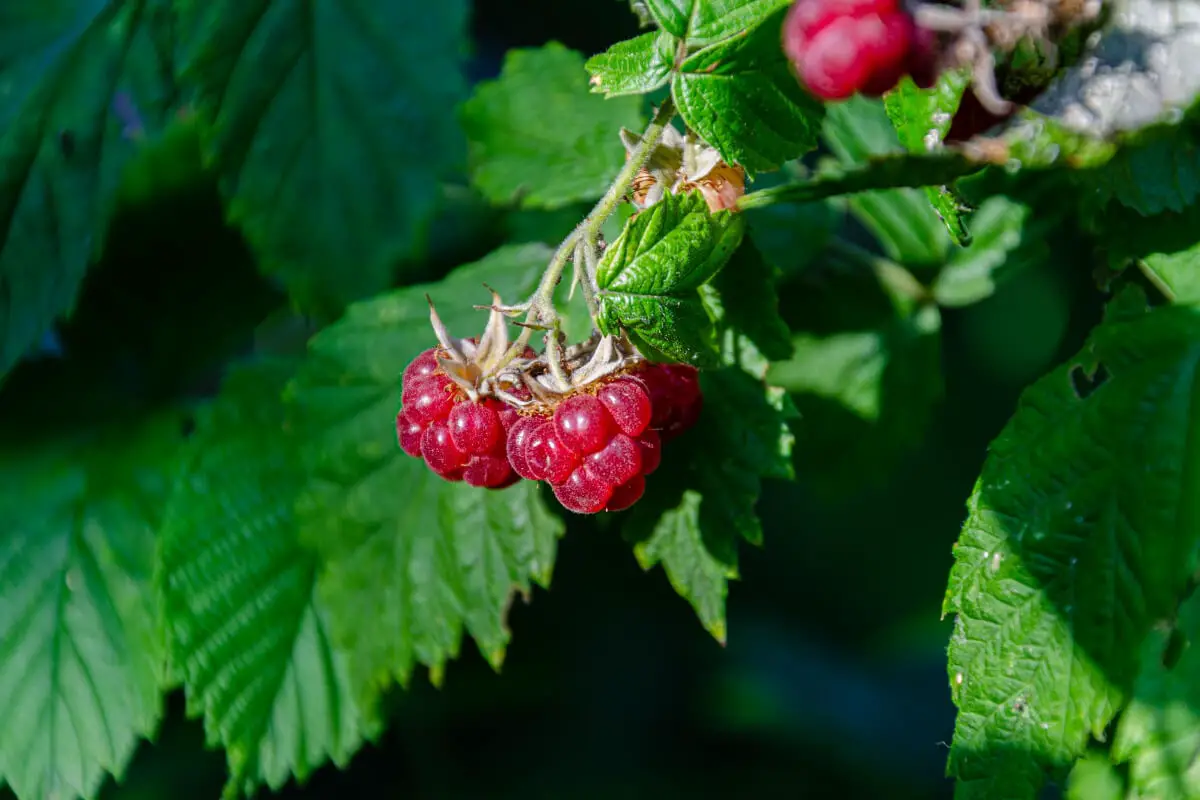
Raspberry is a very common shrub, both in the wild and on fruit farms. In the eastern United States, it’s common to find raspberry bushes in the undergrowth. They also grow along trails and roads. They are also common in overgrown yards and old fields, as they are adaptable and easy to cultivate.
Raspberries are well-liked by all because of their sweet taste and hint of tartness. To pick the best raspberries, look under the leaves of the oldest branches. Always be mindful of the thorns when harvesting these fruits.
Raspberries can be enjoyed fresh. They can also be used in jams, pies, porridge, pancakes, and many other tasty recipes. They are rich in vitamin C and fiber.
5. Redcurrants (Ribes rubrum)
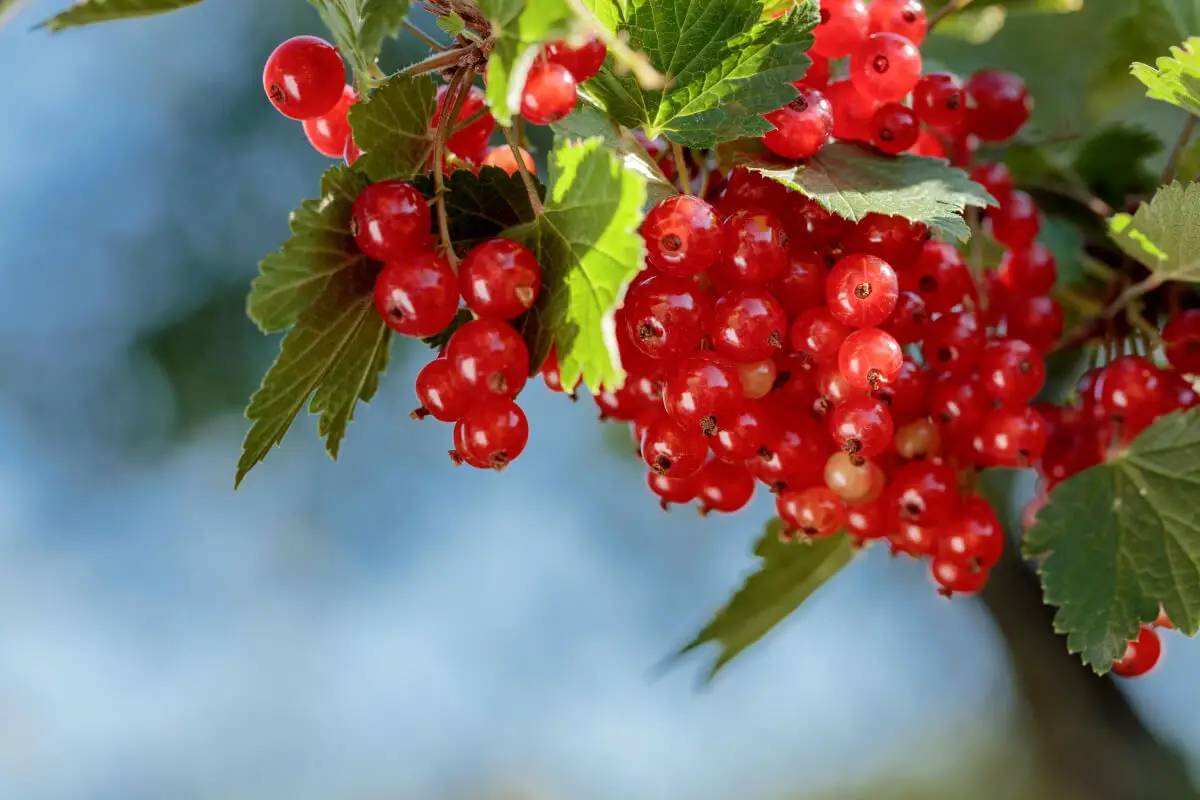
Redcurrants are small bushes. They have clusters of 5 to 10 small, red fruits that hang down. There are many different species of currants in the gooseberry family. Most are barely distinguishable. Fortunately, they are all edible.
The only exception is Ribes viscosissimum. It can be recognized by the sticky substance covering the leaves, sticks, and fruits. If eaten, this species is not extremely dangerous, but it can cause nausea and vomiting.
The redcurrant plant is a good addition to any garden, as it can produce up to 9 lb. of currants in a single season. Redcurrants taste very tart, so not everyone enjoys them fresh. Most people use them to garnish pancakes or to make jellies or cakes. They are also rich in antioxidants and vitamins, particularly vitamin B.
6. Bunchberries (Cornus canadensis)
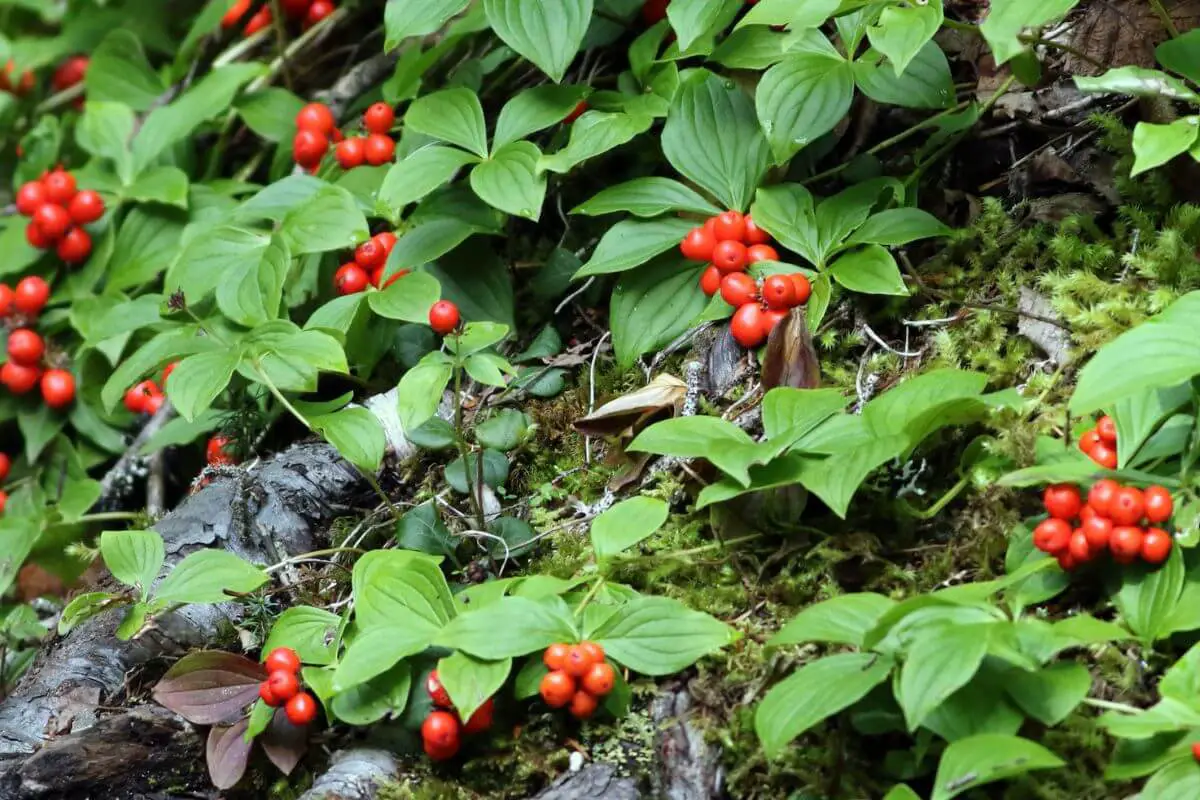
Bunchberry is a plant in the United States, Canada, and eastern Asia. It thrives as a forest groundcover, especially under conifers like firs and pines. You’ll see a lot of bunched berries or small white flowers (early summer) on the ground.
You won’t usually find an isolated bunchberry plant, as they tend to grow in groups that form thick mats. They are called bunchberries because they have a bunch of berries clustered together. They can be easily spotted, as the red fruits are born at the center of the plant’s top 4-6 leaves.
Bunchberries are plentiful but not very tasty to eat. They contain many large, hard seeds and are quite mild in flavor. You shouldn’t let this stop you because bunchberries are very healthy. They contain high amounts of vitamin C, potassium, and flavonoids.
They are perfect for making jams. They have plenty of pectin, which helps the thickening process.
7. Nanking Cherries (Prunus tomentosa)
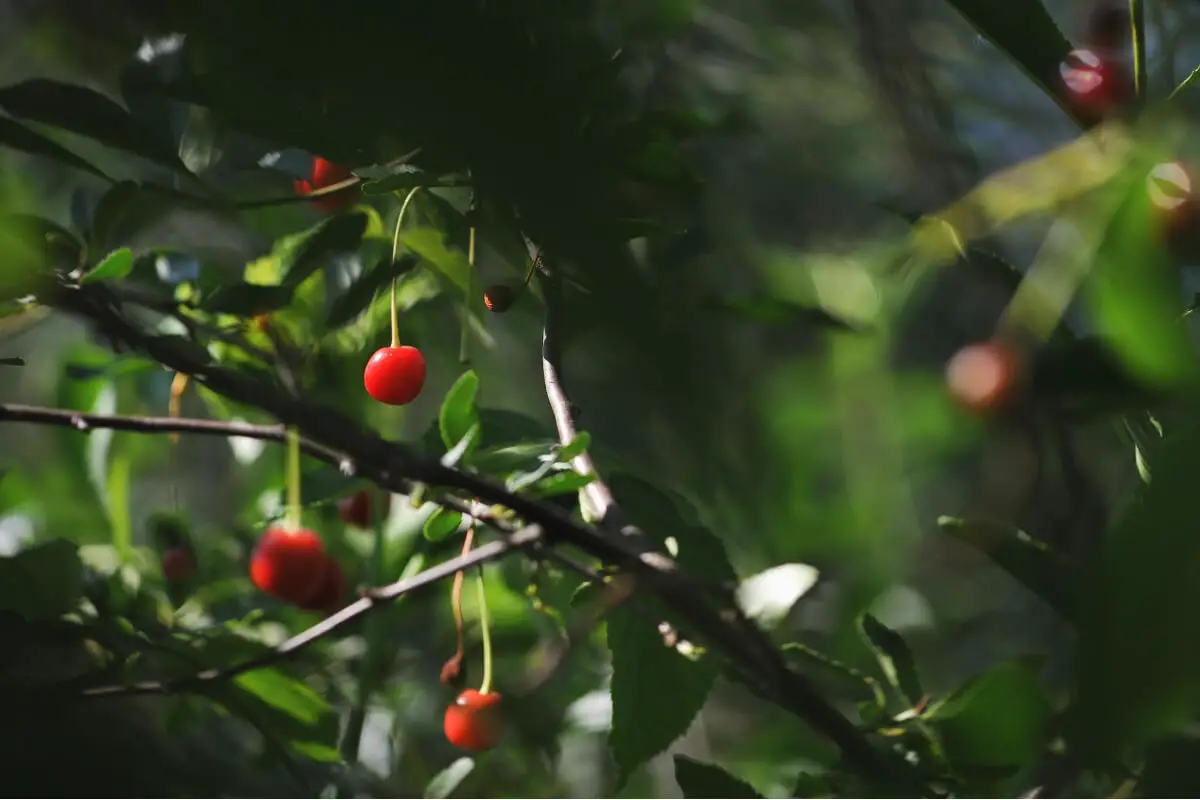
Nanking cherries are native to China and Japan and were introduced in the U.S. at the end of the 1800s. Here, they thrive in the north. They can’t handle the south’s high heat and humidity.
Despite its common name, this plant is more closely related to plums than true cherries. It’s a small shrub that produces plenty of round, red fruits. This antioxidant-rich fruit is often cultivated in gardens as it is easy to grow.
Nanking cherries taste tart and refreshing. They are full of antioxidants and vitamin C. Like many other red berries, they are often used for juices and jams. They can also be added to pickled vegetables and mushrooms.
8. Pin Cherries (Prunus pensylvanica)
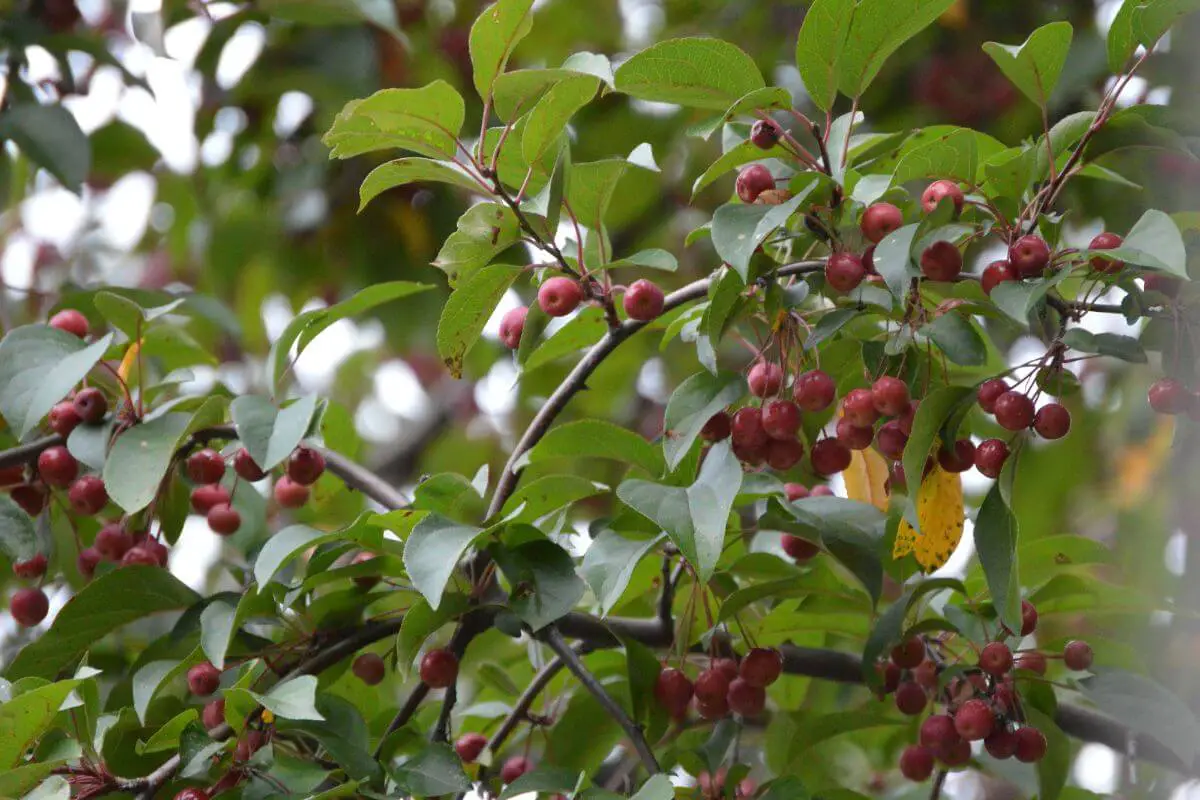
Pin cherries are another species that produce cherry look-alikes. These have a big pit, which helps explain why they aren’t commercially popular.
In North America, pin cherries grow in the northeastern states and Canada. They can also be found in the Appalachians and certain areas of the Rocky Mountains. They’re found across the prairies, in boreal forests, parks, and riverbanks. They are also found in other undisturbed areas with plenty of sunlight.
Pin cherries can be picked at the end of July but are very tart when eaten raw. They taste best when made into jams, jellies, and juices. These fruits don’t dry well but can be preserved with alcohol. Be mindful of not eating the pits, as they contain cyanide.
Not much is known about the nutritional values of these fruits. But they are supposedly rich in antioxidants.
9. Salmonberries (Rubus spectabilis)
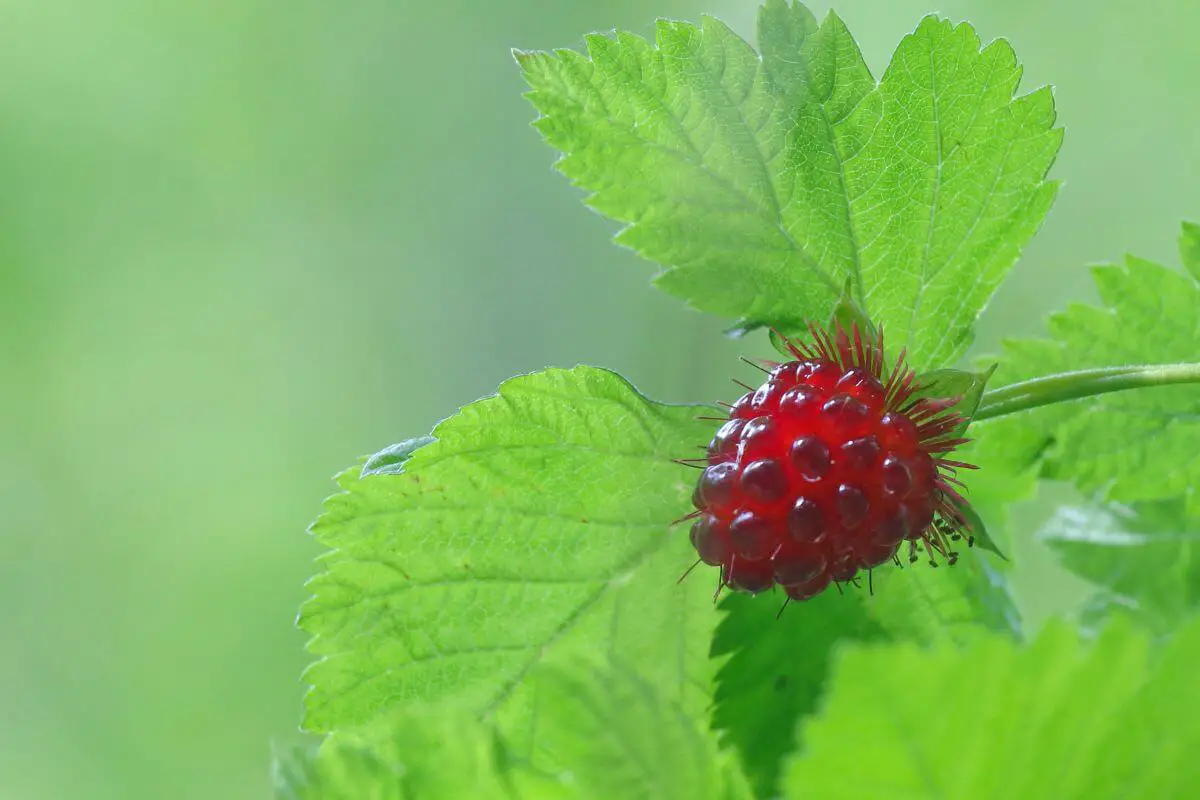
Salmonberries are red or orange fruits. They grow closely together in small clusters that look like salmon eggs. They grow on shrubs and are common in moist areas near rivers and streams.
In North America, they are most abundant along the west coast and in wet forests in the country’s interior. In moist coastal forests and along shorelines, they can grow up to 6.6–13 feet (2–4 meters) tall.
Salmonberries can be consumed raw but are very tart in flavor and contain bitter seeds. For this reason, they are usually paired with other berries and made into jams, adding plenty of sugar. They are high in vitamin C, vitamin K, and manganese.
10. Wild Strawberries (Fragaria virginiana)
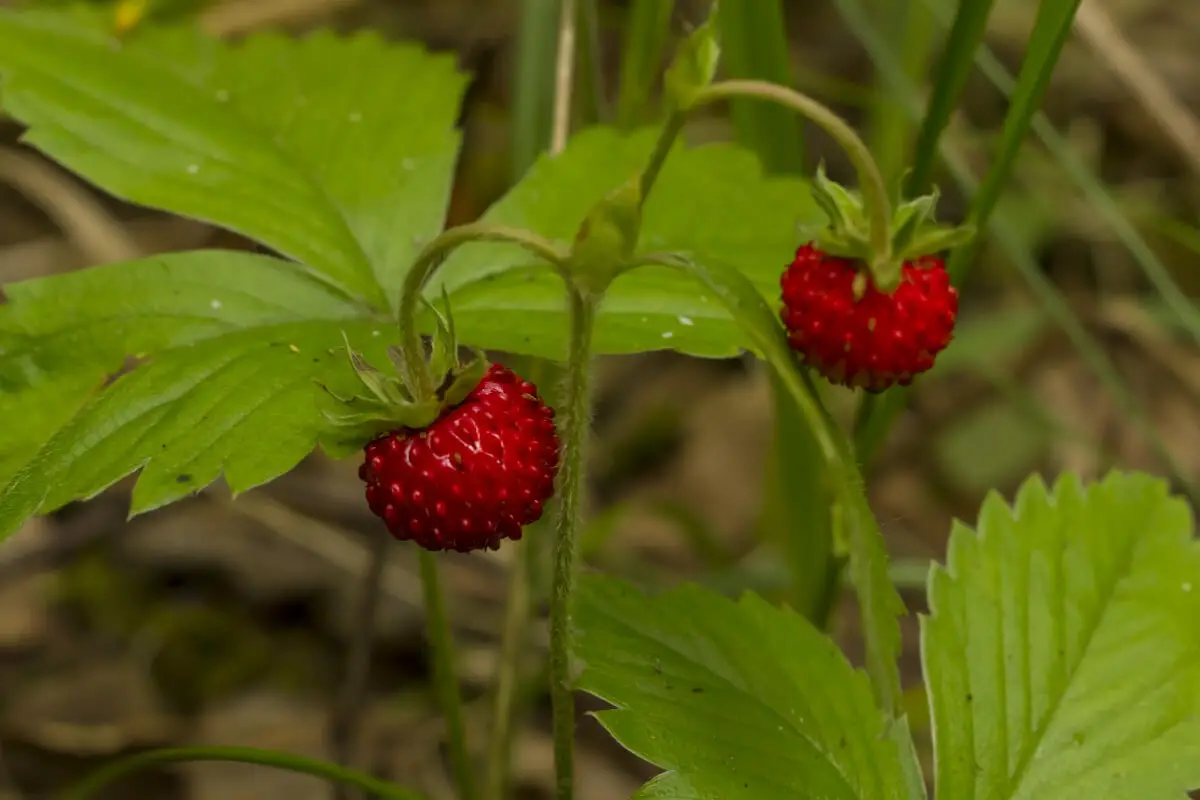
Wild strawberries are part of the same family as blackberries and raspberries. They are smaller than cultivated strawberries but make up for it in taste. Their lower water content makes them much more flavorful.
Look for them in moist areas exposed to the sun. Particularly on grasslands, open woods, and forest edges. They are common throughout North America.
Wild strawberries are wonderful to eat raw and are rich in vitamin C. They can also be used in many recipes instead of cultivated farm strawberries. Just a few examples are jams, pies, and smoothies. The leaves of this plant are also edible, and they can be dried and used to make tea.
- Learn more: Can You Eat Wild Strawberries?
What Are 10 Red Non-Edible Berries You Need to Avoid?
Certain berries have harmful substances that can cause unpleasant or fatal side effects. When foraging for red berries, if you find these poisonous berries in the list below, be sure to avoid them. They are not edible.
1. Winterberry (Ilex verticillata)
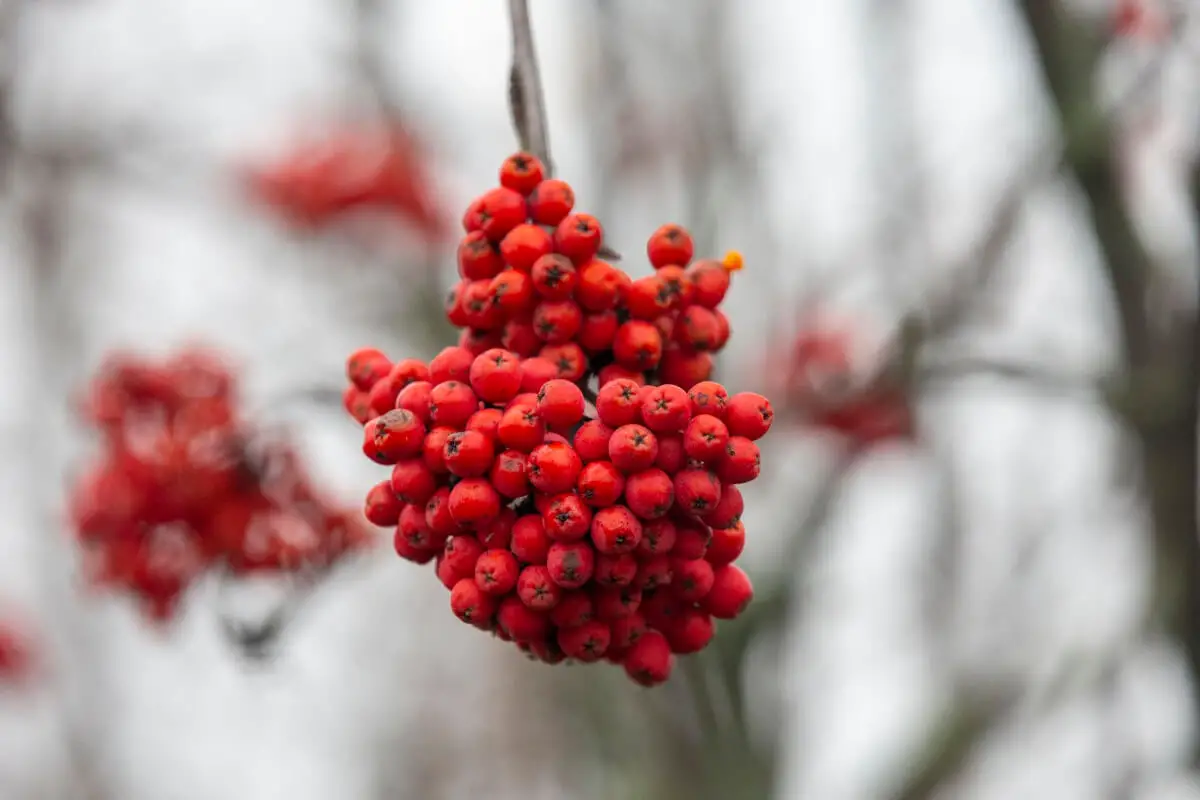
Winterberry is a hardy shrub. It grows in wet areas like swamps and moist forests. It is found throughout most of the United States and Canada.
Despite their beauty, winterberries can cause low blood pressure and nausea if ingested. Birds love them, but only after one or more winter frosts. They are otherwise too tough even for them.
2. American Holly (Ilex opaca)
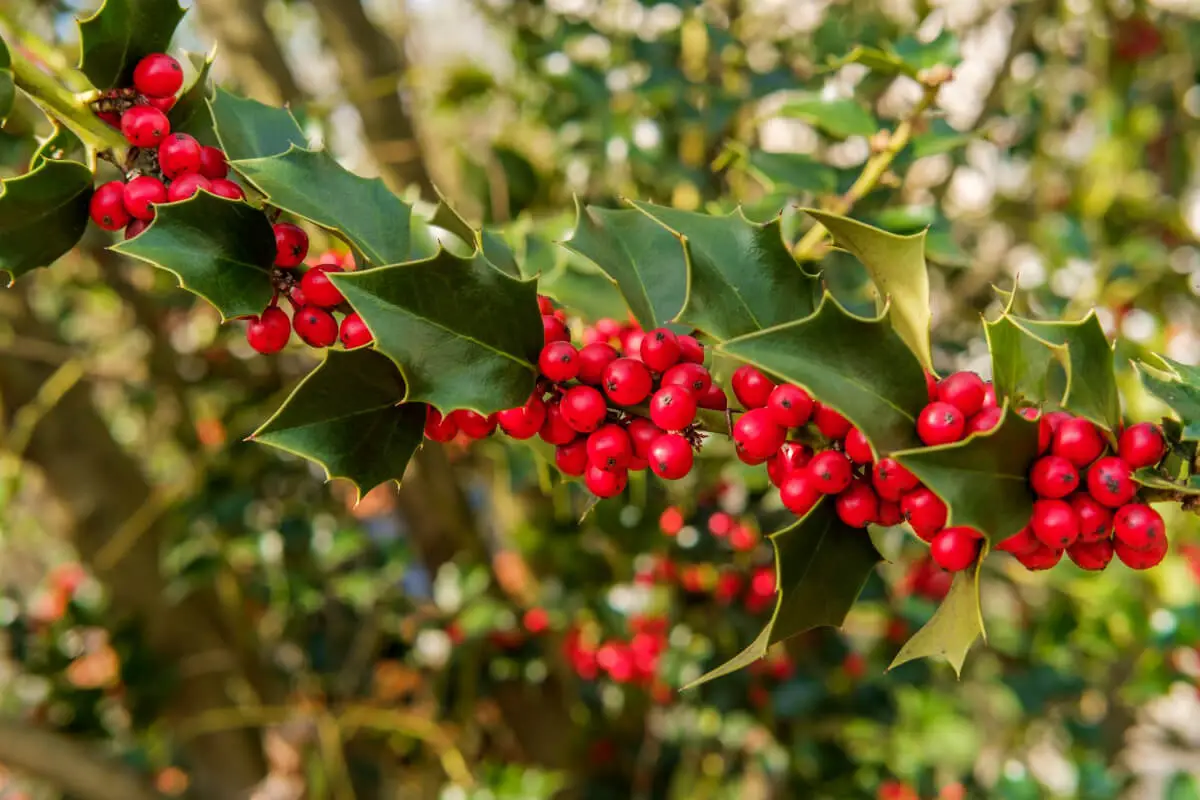
American holly is a large, evergreen tree closely related to winterberry. It’s native to the eastern and southern parts of the United States and grows in moist forests.
American holly fruits are toxic to humans. The berries are also poisonous to cats and dogs. They can cause fatigue, dehydration, diarrhea, stomach cramps, and vomiting.
Though the berries of this plant aren’t edible, its leaves and sap are. The leaves can be dried and used to make herbal teas, while the sap is an excellent tonic.
3. Red Berry Mistletoe (Viscum cruciatum)
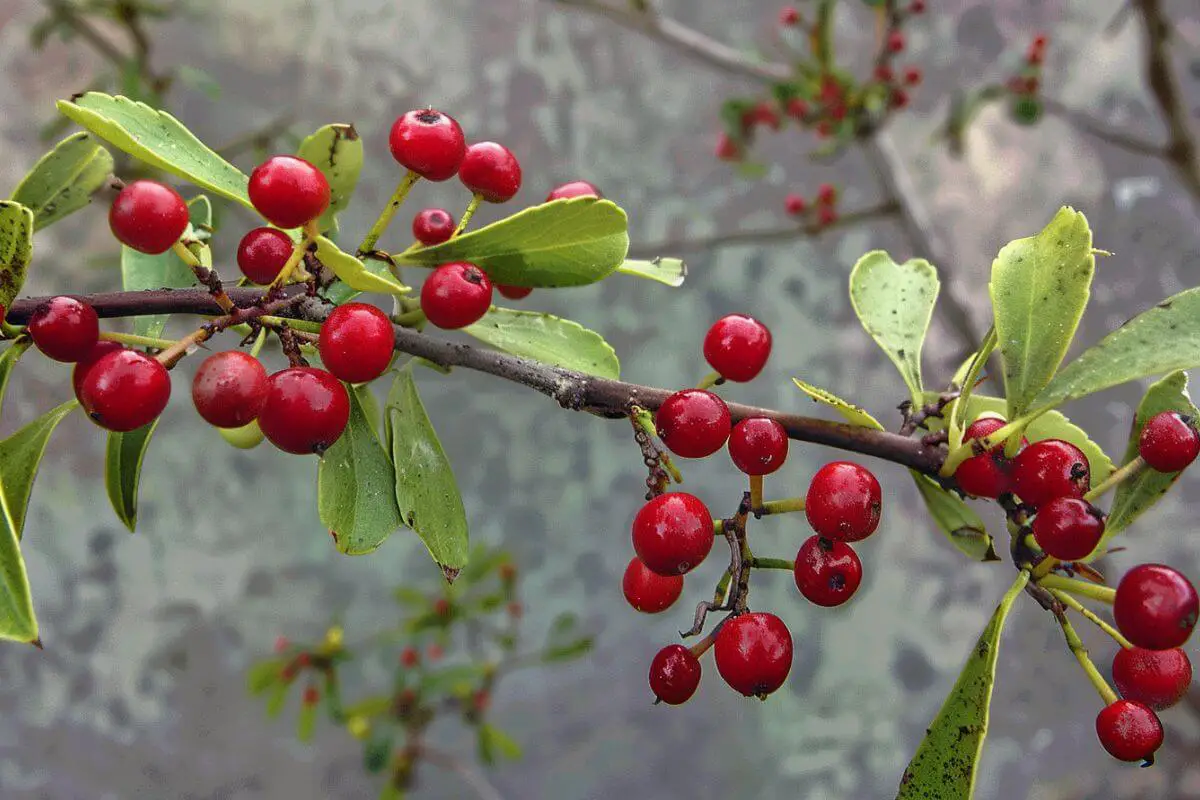
This red berry species of mistletoe. It is related to the more well-known European one with white berries. Both are perennial plants that grow on other trees and shrubs and partly rely on them for nutrients.
The red berry mistletoe has translucent, sticky, red berries. It’s poisonous, like the rest of the plant. Eating any part can cause severe illness or death.
4. Butcher’s Broom (Ruscus aculeatus)
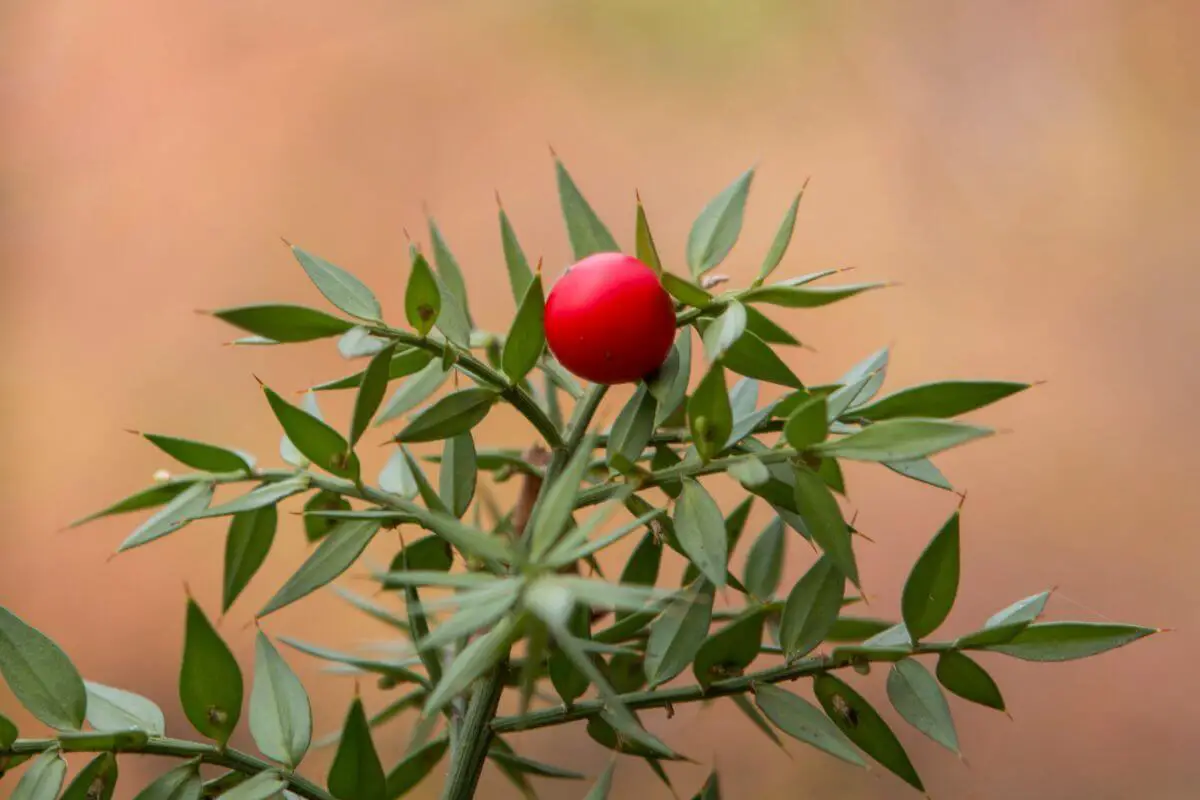
Butcher’s broom is a shrub that produces large, glossy red berries which grow in small clusters. It’s common as an ornamental plant.
The butcher’s broom’s red berries are poisonous and can cause digestive problems. On the other hand, the root has been used for centuries as a traditional remedy. It treats infections and poor blood flow.
5. Cotoneaster (Taxus species)
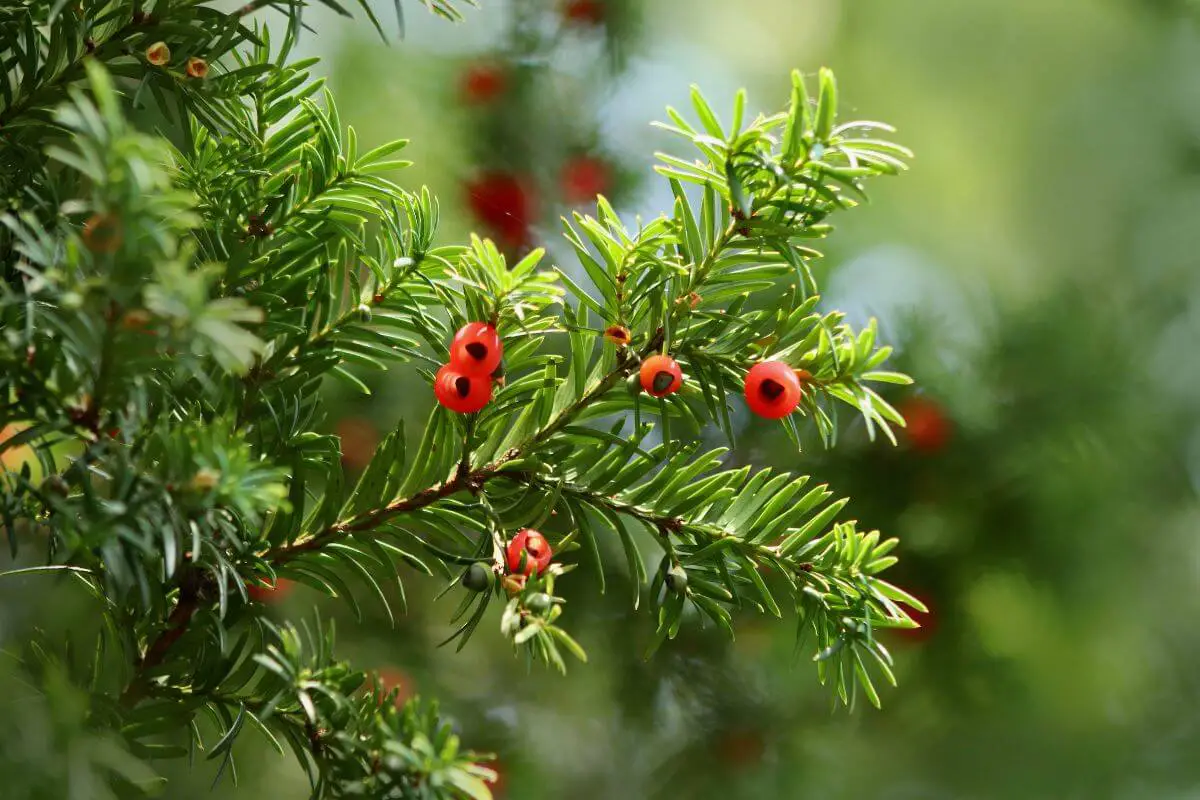
Cotoneaster is native to China but has naturalized in much of North America. It’s an evergreen shrub with clusters of red berries that are poisonous to humans, dogs, and livestock.
Cotoneaster berries only cause stomach problems in small amounts. But, the symptoms can be much more serious if you eat many. More serious conditions include gastroenteritis, weakness, difficulty breathing, and seizures.
6. Spindles (Euonymus europaeus)
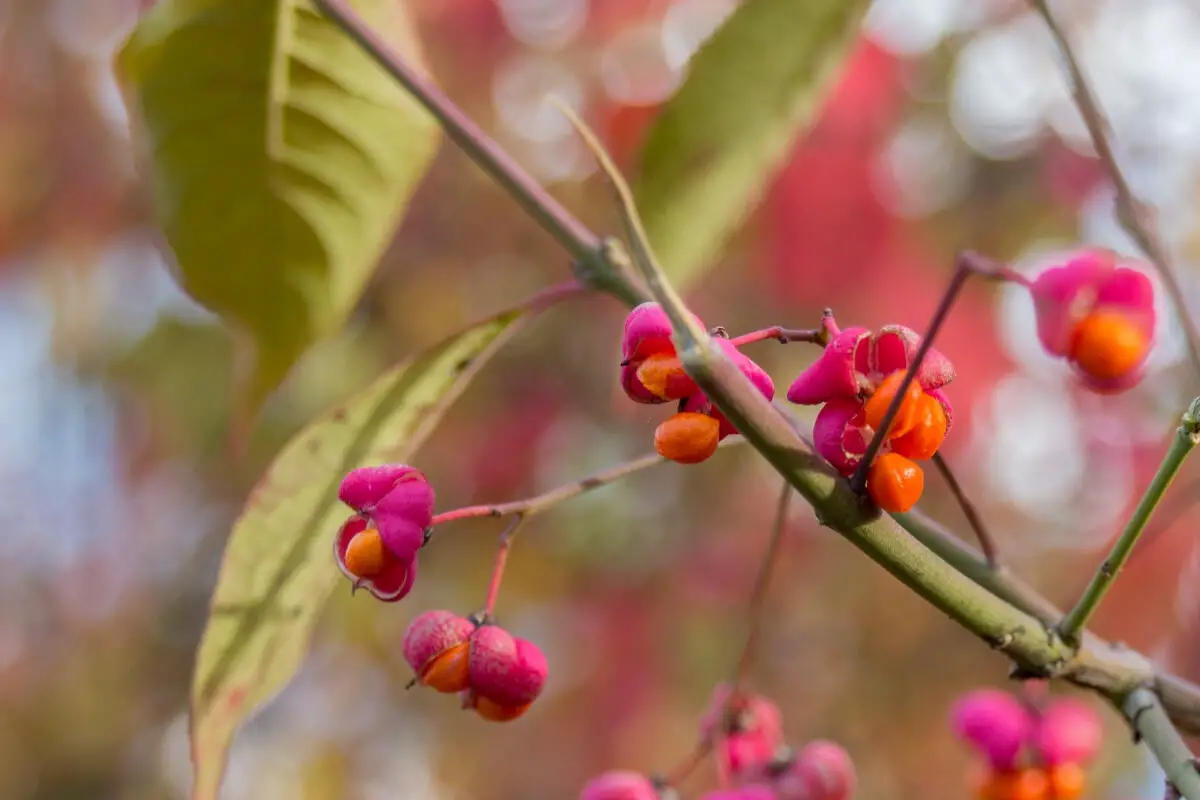
Spindles are non-edible berry trees or shrubs. They are easily recognizable because their red berries have a very unusual shape. They are reddish-pink, with four lobes encasing tiny orange seeds.
Despite their interesting appearance, spindle berries are poisonous and have laxative effects. The leaves are also toxic to humans, while other animals can feed on the whole plant without problems.
7. Lily of the Valley (Convallaria majalis)
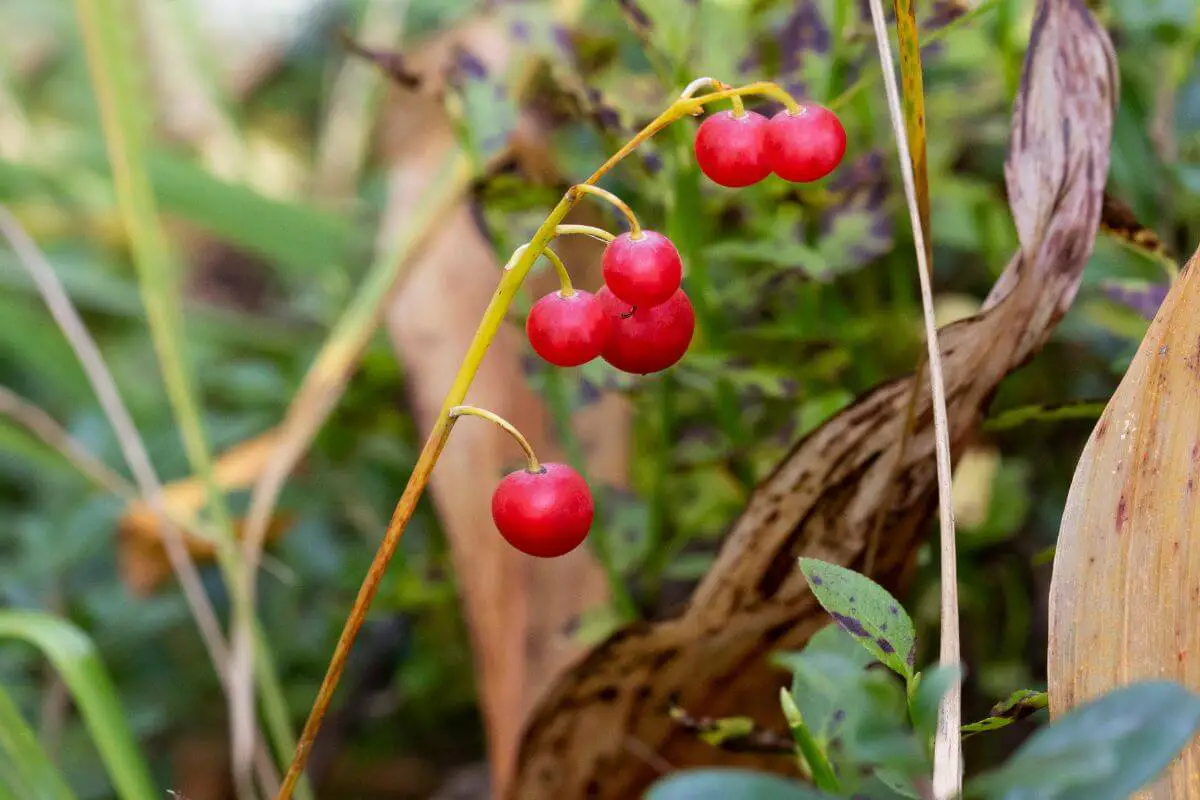
Lily of the valley is an exquisite little plant with white pendant flowers. These sweetly scented flowers mature into red toxic berries.
Eating a small amount of these lily of the valley red berries causes confusion, fatigue, vomiting, and belly pain. It also causes bradycardia (reduced heart rate). At the same time, a higher quantity can lead to cardiac arrest.
8. Tartarian or Bush Honeysuckle (Lonicera tatarica)
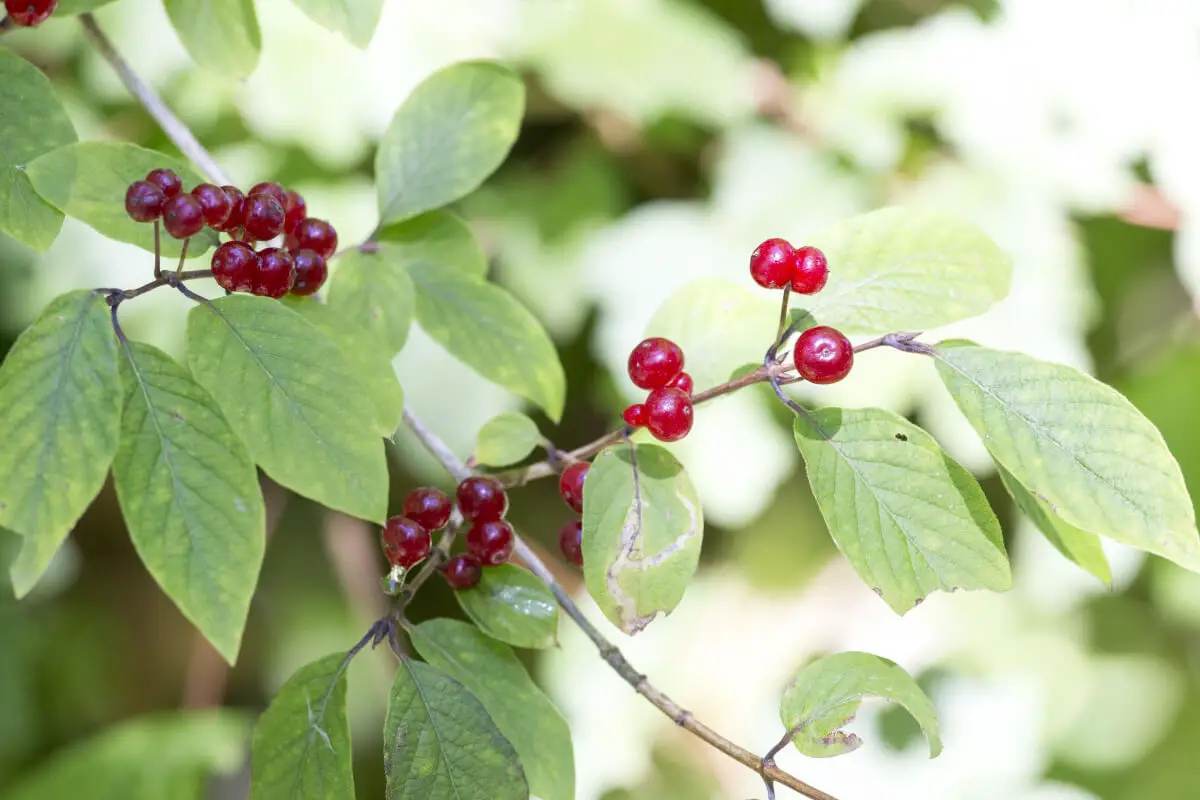
Tartarian shrubs have small fruits that start as green and become red when ripe in July. They are easy to identify, thanks to its dark green leaves.
Tartarian berries are toxic to people, and even birds avoid them. They are less toxic than other poisonous plants. They can cause mild symptoms: diarrhea, vomiting, and abdominal pain.
9. Bittersweet Nightshade (Solanum dulcamara)
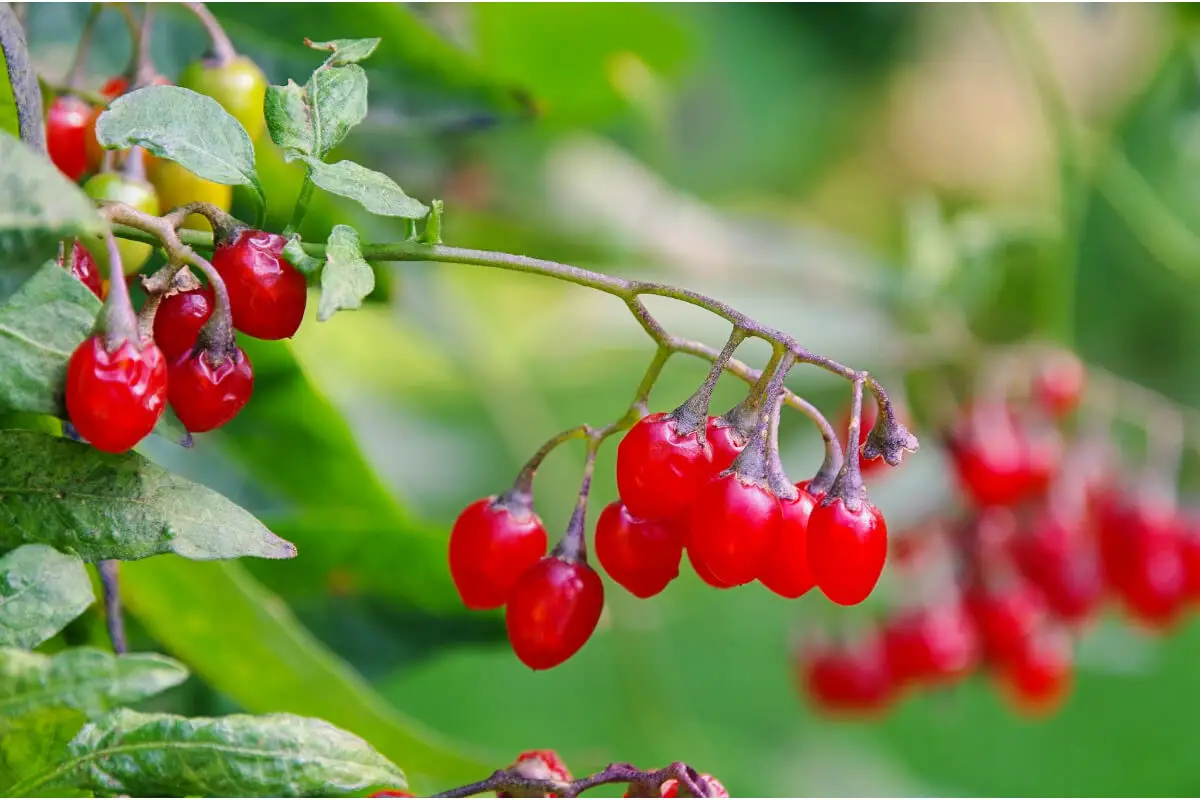
Bittersweet nightshade looks like a cherry tomato plant. It has small, round, red fruits. Eating these berries is extremely dangerous, especially for children.
Poisoning causes vomiting and diarrhea. It also causes delirium and bleeding in the stomach or intestines. It can cause convulsions and even death.
10. American Bittersweet (Celastrus scandens)
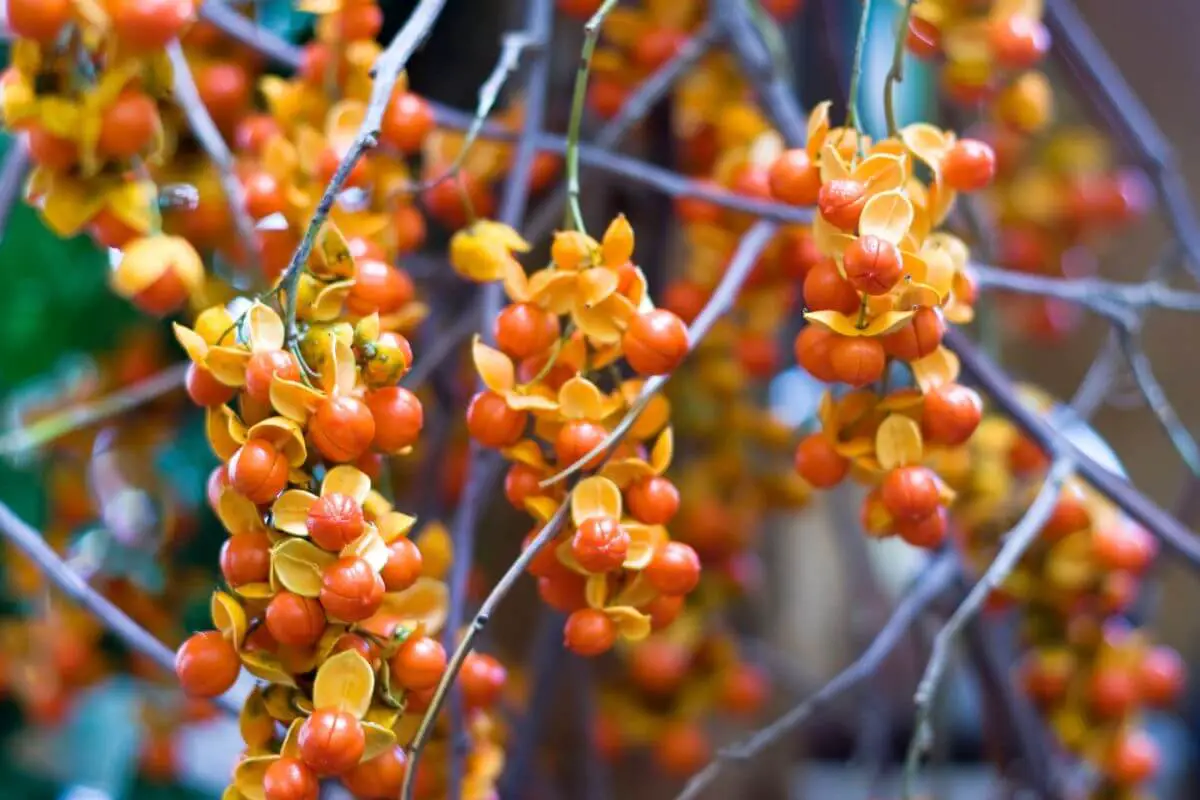
American bittersweet can be confused with nightshade, but it’s not as poisonous. The red berries are still toxic, though, and can sometimes cause death in pets and children.
Eating the berries or leaves of American bittersweet usually causes sickness. Fortunately, poisoning doesn’t occur often, as this plant smells unpleasant.
Red Edible Berries and Poisonous Ones Final Thoughts
If you enjoy foraging for berries, it’s important to know which red berries are safe to eat and which ones are not. You can add edible berries, like tart red raspberries and sweet wild strawberries, to jams. You can also eat them raw or use them in pies.
However, avoid any berries, fruits, and plants you are unsure about. Some, like winterberry, butcher’s broom, and spindles, are toxic. They can make you seriously ill or even cause death.
Knowing red berries correctly will keep your foraging safe and fun!
To learn more about identifying other berries and plants, check out these articles:


Very interesting and informative. Thank you!